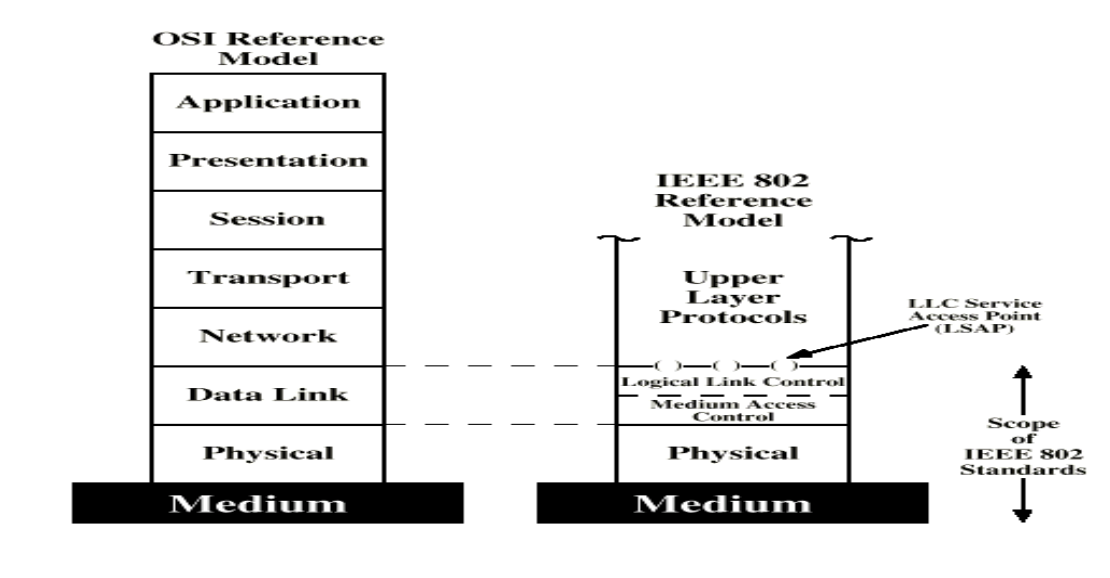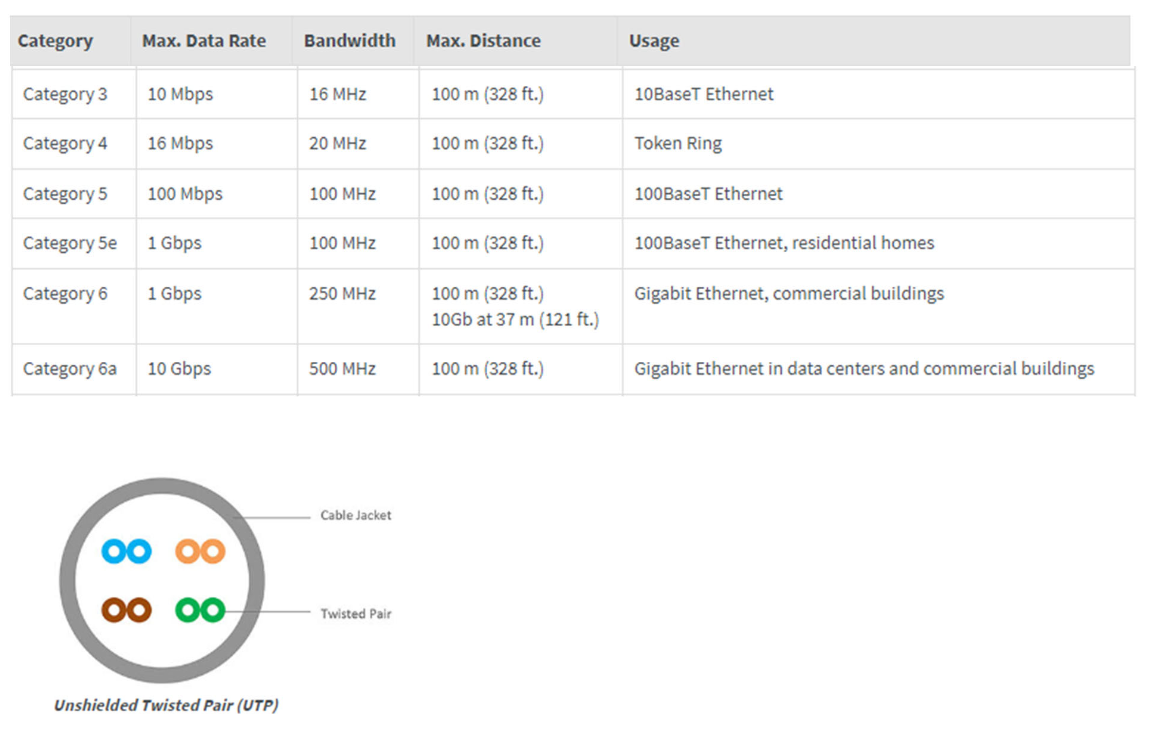IEEE Standards (Ethernet and Wireless Standards)
There's IEEE 802 Standards, which are Local Access Network (LAN) and Wide Area Network (WAN) standards. It specifies the first 2 layers of the protocol stack. Namely the physical and data link layer.
- 802.3 – Ethernet
- 802.11 – Wireless Lan
- 802.15 – Wireless Personal Area Networks (PAN) (e.g. Bluetooth,
Zigbee)
The data link layer specifically has a Medium Access Control (MAC) and Logical Link Control (LLC) control.

Really the MAC deals with the physical layer, and these layers change often over time (while things like the TCP, IP (and UDP) Protocol Suite haven't changed).
The Logical Link Control Layer has:
- frame assembly
- frame dissassembly
- interface to higher levels
The Medium Access Control (MAC) has:
- Encoding/Decoding of signals
- Synchronization via frame preamble
- Works with physical layer for bit Transmission/Reception

(an ethernet frame) (address + type + payload + FCS)
Here:
- Wireshark would see everything starting at the destination MAC address up to the FCS (not inclusive). See program 1 for more information on that.
- Here the FCS is a tail that is part of the error detection (CRC) for the Internet Checksum.
- The SFD is a Start of Frame Delimiter. It tells both sides how to synchronize their clocks. This is always
1-byteis just 10101011 (notice the double 1's) - The Preamble is always
7-bytesand is just 1010101010... - Thus the stuff we are missing totlas 8-bytes = 64 bits.
There's no check for if the receiver is ready. The data just will get sent immediately.
The Ethernet PDU - Protocol Data Unit is a layer 2 PDU called a frame. It is Connection-Less (Protocol), unreliable, but includes error detection.
The max payload length is normally 1500 bytes, but the jumbo size (used primarily in datacenters) is 9000 bytes (as links go faster and faster we might send more data).
Each transmit and receive wires are a twisted pair, connected like we discussed in 2 Ethernet Switches.
